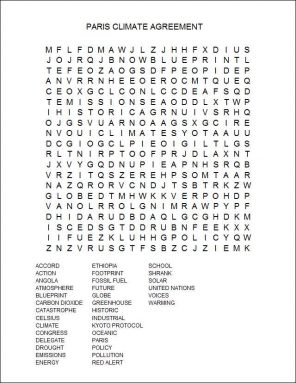Paris meeting yields climate agreement
Negotiators outline how nations must now work to limit global warming to 2° Celsius or less
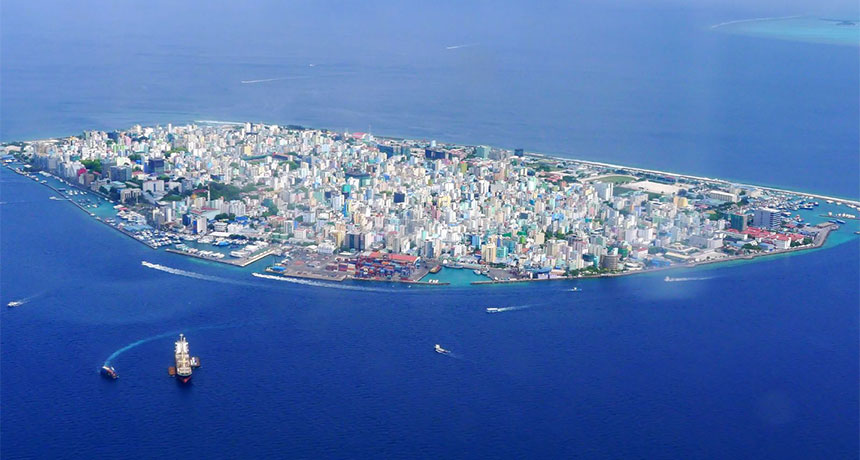
Almost 200 nations have agreed to curb their greenhouse emissions. The goal is to limit global warming to 2° Celsius. But island nations such as the Maldives, its capital Malé shown, worry that sea-level rise due to even that warming could swallow up large shares of their land.
TIMO NEWTON-SYMS/FLICKR (CC BY-SA 2.0)
On December 12, delegates to the United Nations climate change meeting outside Paris, France, came to a final agreement. They agreed to curb the worst effects of climate change by limiting global warming to “well below” 2° Celsius (3.4 °Fahrenheit). Representatives of 195 countries agreed to the blueprint for action.
For perspective, last year, the average temperature across all land and ocean surfaces was 0.69 °C (1.24 °F) above the 20th century average. And that fever was about 0.8 °C (1.4 °F) higher than before heavy use of fossil fuels began in the 1700s. Now, 2015 is on track to be even warmer still. That’s according to a November announcement by the National Oceanic and Atmospheric Administration.
In hopes of achieving that limit on global warming, the new Paris accord lays out a “roadmap” — or guidelines — for how societies should change how they use energy, preserve carbon-storing trees and more. The document came together after more than a week of late-night debates at the meeting and years of behind-the-scenes discussions across the globe.
The new agreement asks nations to work toward kicking their fossil-fuel habit. It even holds out the prospect that world leaders will act on an even more ambitious goal at some future date: limiting global warming to an increase of no more than 1.5 °C above temperatures typical of before the Industrial Revolution began. That started back in the mid-1700s.Yet even with the new agreement in hand, countries will not find it easy to comply with the new goals. Individual countries will have to swap use energy sources that emit lots of greenhouse gases — namely coal, oil and natural gas — for lower-emitting alternatives such as wind, solar and nuclear power. Engineers around the world are also developing new technologies that pull greenhouse gases from the air. These are not yet ready to roll out. But when they are, they could cut overall increases in atmospheric emissions of greenhouse gases to near zero. The earliest that might occur: probably well after 2050.
The new Paris accord asks countries to release their long-term plans to cut emissions within the next five years. Every five years after that, countries must measure their progress and then set new policies, as needed, to make sure their carbon-cutting goals stay in line with curbing the increase in global warming.
Industrial countries of the world include the United States, Canada, and most nations in Western Europe. They are being asked to reverse the rise in carbon emissions as soon as possible. Largely rural and non-industrial nations are being given more time before they will have to start cutting back their use of fossil fuels. Such countries include Bangladesh, Ethiopia and Rwanda. Richer nations also have pledged to help out those less-developed nations. Industrial nations will provide them information on and access to cleaner technologies. They also will set up a $100-billion-a-year fund by 2020 to help pay for changing the way less-developed countries use energy.
“It took hard work, grit and guts, but countries have finally united around a historic agreement,” says Jennifer Morgan. She’s a climate policy expert with the World Resources Institute, a research group based in Washington, D.C. The new Paris accord “marks a turning point on the climate crisis,” she says. Moreover, she notes, it “is both ambitious and powered by the voices of the most vulnerable.”
(story continues below image)
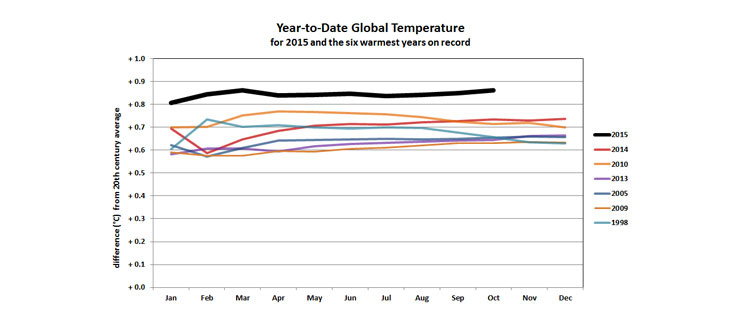
Earlier attempts at such an agreement: unsuccessful
The United Nations’ Environment Programme is based in Nairobi, Kenya. It has been hosting annual meetings to address climate change. The Paris meeting was the 21st of these. Efforts at some of its past meetings proved notable. A 1997 event in Japan, for instance, yielded the Kyoto Protocol (named for the city where it was put together). This treaty set the first major guidelines for nations to use in drafting common laws for limiting greenhouse-gas emissions.
But most of the negotiators that agreed to work on those laws never got their governments back home to enact such laws. So 12 years later the team meeting in Copenhagen, Denmark, tried to create a stronger document. In the end, it fell short.
In the mean time, the planet has just gotten warmer and warmer.
Such changes in climate, visible throughout the world, provided more support for a new treaty. And indeed, in this year’s Paris talks, both China and the United States, agreed to push for global cuts in cut greenhouse gas emissions — including in their home countries. And that’s important. Owing to their heavy fossil-fuel use, these two nations are the world’s biggest emitters of greenhouse gases.Many experts have been warning that society is running out of time to avoid catastrophe. Over the last few decades, human activities such as fossil-fuel use have spiked the level of heat-trapping gases in Earth’s atmosphere. Carbon dioxide levels in air have risen from about 280 parts per million in 1880 to 400 parts per million earlier this year. That rise has helped boost the planet’s average annual temperature by about 1 °C. But that warming isn’t uniform. It’s been happening faster over land and in the Arctic.
If things don’t change, computer models of the future predict that Earth’s average temperature could rise several degrees more by 2100. That would increase droughts in parts of the world, boost the intensity of strong storms and raise global sea levels. It also would make coastal flooding worse and could leave some low-lying islands below water.In May, scientists also warned that unabated climate change would threaten one in six species with extinction.
Holding average global warming to just 2 °C won’t prevent climate-related problems in the future. Moreover, scientists don’t expect there will be an abrupt rise in disasters once that threshold is crossed. Still, as temperatures rise, the effects of climate change will increase rapidly, says Richard Alley. He’s a climate scientist at Pennsylvania State University in State College.
“Each degree of warming costs more than the previous one,” he notes. One degree of warming is largely within the natural variability of Earth’s climate for most places. But once you get to two degrees, he says, “you start to move outside of familiar territory.”
Should the measures be stronger?
Many delegates at the Paris meeting had argued for setting a far more ambitious goal. They had hoped to hold the global increase in warming to no more than 1.5 °C by 2100. Small island nations in the Indian Ocean and Pacific had argued that a warming of 2 °C could raise sea levels enough to wipe large portions of their countries off the map.
Some African nations such as Sudan and Angola also got behind the 1.5-degree goal. They already face a very high risk of drought and extreme heat. Any further warming, they argued, would only make things far worse.
The new Paris deal invites the United Nations’ Intergovernmental Panel on Climate Change to put together a special report by 2018. It will study the likely impacts of a global warming of just 1.5 degrees above pre-industrial levels.
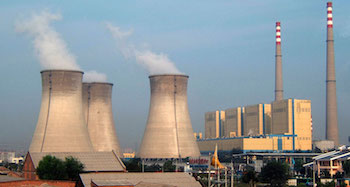
Indeed, on December 8, China’s capital city of Beijing ground to a halt. Activities all but shut down after city leaders issued the country’s first “red alert” for pollution. This alert forced its schools and factories to close.
And this is not the first time air pollution has been very bad.
China recently started investing heavily in wind, solar and nuclear power, notes Kerry Emanuel. He’s an atmospheric scientist at the Massachusetts Institute of Technology in Cambridge. But China is moving away from coal “for health reasons, not just because they want to be good global citizens,” Kerry says.
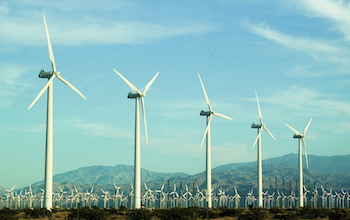
The Paris deal isn’t legal — yet
The negotiators at the climate conference set up the outlines of a new treaty — rules that could have the effect of law. But those rules don’t, and won’t, actually become law in a country until its leaders make it so. The U.S. Congress or other country’s Parliaments, for instance, must ratify the new accord and then give it the rule of law.
Next, these countries will have to figure out how each will go about cutting its carbon emissions.
But many U.S. lawmakers, for instance, are not ready to do that. The United States signed onto the 1997 Kyoto Protocol, but the agreement got mixed up in politics and Congress never ratified it. So it was never given the force of law there. Recently, Republicans in Congress have signaled that they will similarly block any new climate deal by denying it fund.
“Let me be very clear — this Congress will not approve a cent of [money] for the Green Climate Fund,” said Sen. Jim Inhofe. And this powerful Oklahoma Republican chairs the Senate Committee on Environment and Public Works.
Still, with the new Paris accord, the world is now on a safer path, says Andrew Steer. He’s president of the World Resources Institute. “The shift from commitment into action will be even harder and take even more determination. But for today at least, we rest a little easier knowing that the world will be stronger and safer for our children and future generations.”
“Today, we congratulate global leaders for taking a historic step to combat climate change by finalizing the Paris Agreement, says Margaret Leinen.
She is president of the American Geophysical Union, an organization that represents more than 60,000 Earth and space scientists worldwide.
AGU’s scientists called for action on climate change in 2003, she notes. Ten years later, they did that again. Back in 2013, they argued that “human-induced climate change requires urgent action.” Finally, she says, world leaders have “recognized that climate change and its effects are real and serious.”
Power Words
(for more about Power Words, click here)
accord A formal agreement between two or more groups, usually nations.
Arctic A region that falls within the Arctic Circle. The edge of that circle is defined as the northernmost point at which the sun is visible on the northern winter solstice and the southernmost point at which the midnight sun can be seen on the northern summer solstice.
atmosphere The envelope of gases surrounding Earth or another planet.
average (in science) A term for the arithmetic mean, which is the sum of a group of numbers that is then divided by the size of the group.
carbon dioxide A colorless, odorless gas given off as a byproduct of respiration or the burning of some carbon-containing fuel. This gas is produced by all animals when the oxygen they inhale reacts with the carbon-rich foods that they’ve eaten. Carbon dioxide also acts as a greenhouse gas, trapping heat in Earth’s atmosphere. Plants convert carbon dioxide into oxygen during photosynthesis, the process they use to make their own food.
climate The weather conditions prevailing in an area in general or over a long period.
climate change Long-term, significant change in the climate of Earth. It can happen naturally or in response to human activities, including the burning of fossil fuels and clearing of forests.
computer model A program that runs on a computer that creates a model, or simulation, of a real-world feature, phenomenon or event.
drought An extended period of abnormally low rainfall; a shortage of water resulting from this.
economics (adj. economic) The social science that deals with the production, distribution and consumption of goods and services and with the theory and management of economies or economic systems. A person who studies economics is an economist.
economic development Policies aimed at improving the lives of people through changes in their income and quality of life (as measured by improvements in their health, safety, education and more).
engineer A person who uses science to solve problems. As a verb, to engineer means to design a device, material or process that will solve some problem or unmet need.
fossil fuel Any fuel — such as coal, petroleum (crude oil) or natural gas — that has developed in the Earth over millions of years from the decayed remains of bacteria, plants or animals.
global warming The gradual increase in the overall temperature of Earth’s atmosphere due to the greenhouse effect. This effect is caused by increased levels of carbon dioxide, chlorofluorocarbons and other gases in the air, many of them released by human activity.
greenhouse gas A gas that contributes to the greenhouse effect by absorbing heat. Carbon dioxide is one example of a greenhouse gas.
greenhouse effect The warming of Earth’s atmosphere due to the buildup of heat-trapping gases, such as carbon dioxide and methane. Scientists refer to these pollutants as greenhouse gases. The greenhouse effect also can occur in smaller environments. For instance, when cars are left in the sun, the incoming sunlight turns to heat, becomes trapped inside and quickly can make the indoor temperature a health risk.
Industrial Revolution A period of time around 1750 that was marked by new manufacturing processes and a switch from wood to coal and other fossil fuels as a main source of energy.
Intergovernmental Panel on Climate Change, or IPCC. This international group keeps tabs on the newest published research on climate and on how ecosystems are responding to it. The United Nations Environment Programme and the World Meteorological Organization jointly created the IPCC in 1988. Their aim was to provide the world with a clear scientific view on the current state of knowledge in climate change and its potential environmental and social impacts.
renewable energy Energy from a source that is not depleted by use, such as hydropower (water), wind power or solar power.
solar Having to do with the sun, including the light and energy it gives off.
treaty A formal agreement that two or more sovereign powers (usually countries or tribal nations) have adopted, giving its provisions the force of law.
United Nations Environment Program One of the many specialized agencies of the United Nations, this one is headquartered in Nairobi, Kenya. Created in 1972, its role is to serve “as the voice” within the United Nations for the wise and sustainable use of resources throughout the world. It also works to educate people on these issues and to trigger action as necessary to protect the environment.
Word Find (click here to enlarge for printing)
